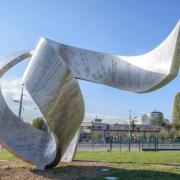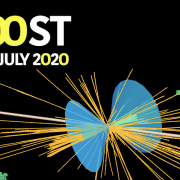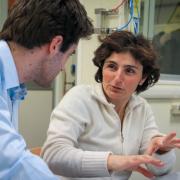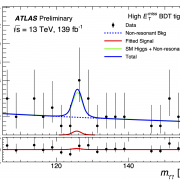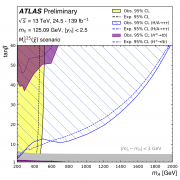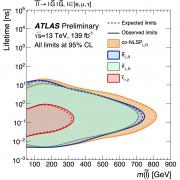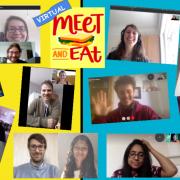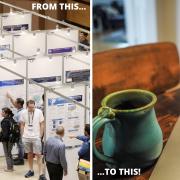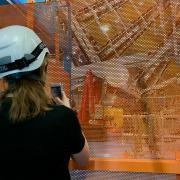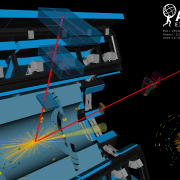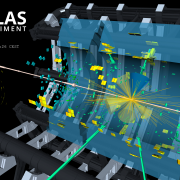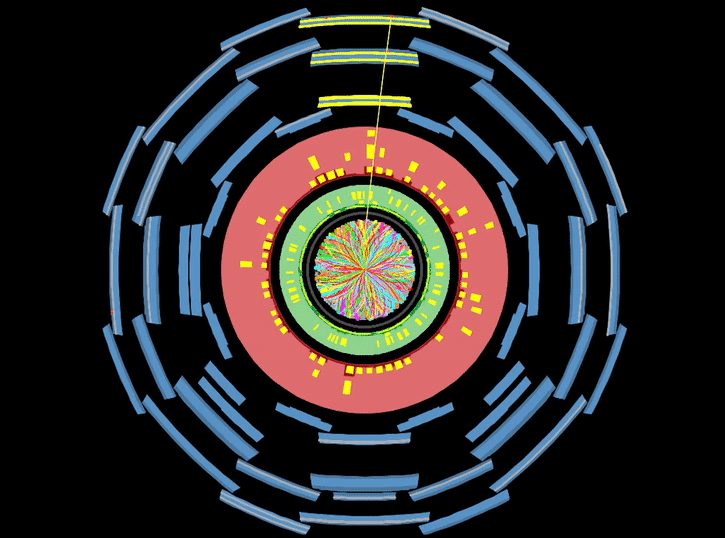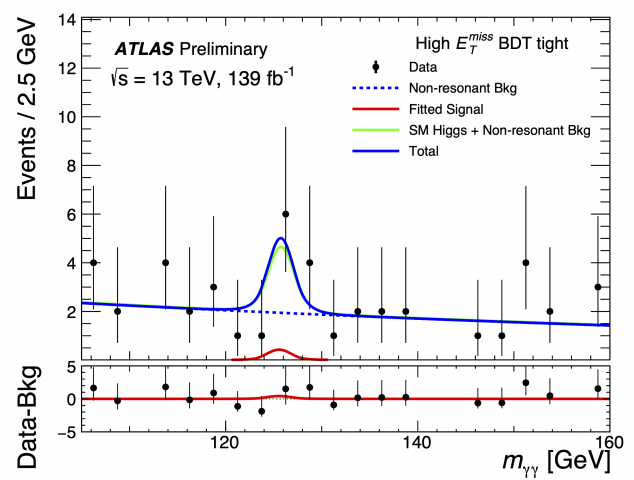Access to Collaboration Site and Physics Results
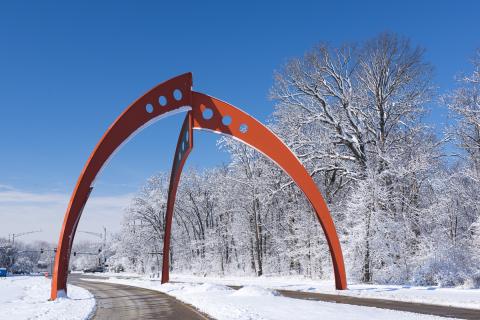
Broken symmetry: searches for supersymmetry at the LHC
– A commentary by ATLAS physicists Paul de Jong and George Redlinger on the history, progress and future of the search for supersymmetry.Read more →
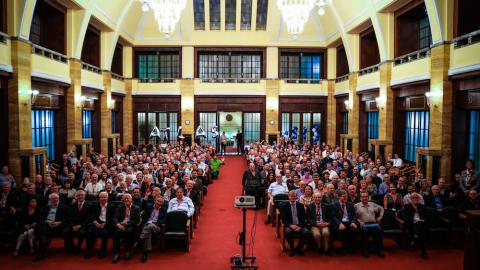
Behind the scenes at ATLAS Week
– A few times a year, the large LHC collaborations such as ATLAS organise an internal overview session. This photo essay will take you to the most recent of these “ATLAS Weeks” – giving you a glimpse behind the curtain, and exploring this essential part of the collaboration structure and life.Read more →
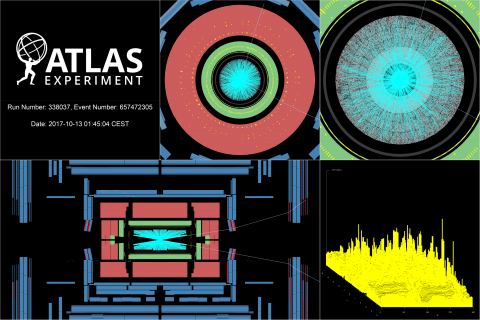
Noble nuclei open new doors in ATLAS physics
– Take something you think you understand, change it and see what happens. Earlier this month, the ATLAS Experiment put this basic scientific principle to the test during the first Large Hadron Collider (LHC) xenon run.Read more →
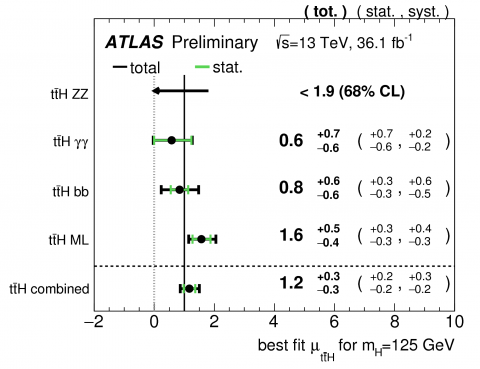
ATLAS finds evidence of the Higgs boson produced in association with a pair of top quarks
– The ATLAS collaboration has presented evidence of “ttH production”, a rare process where a pair of top quarks emits a Higgs boson. Observing this process would provide new insight into the Higgs mechanism and allow for new studies of how unknown physics might (or might not) change the behaviour of this fundamental particle.Read more →

Photon-tagged jet quenching in the quark-gluon plasma
– Collisions of lead nuclei in the LHC form the hot, dense medium known as the quark-gluon plasma (QGP). Experimentally, the QGP is characterized by the collective flow of emerging quarks and gluons. They fragment into highly collimated “jets” of particles that in turn lose energy through a phenomenon known as “jet quenching”. Studying this effect can help improve our understanding of quantum chromodynamics, the theory of the strong nuclear interaction that governs the behaviour of the QGP.Read more →
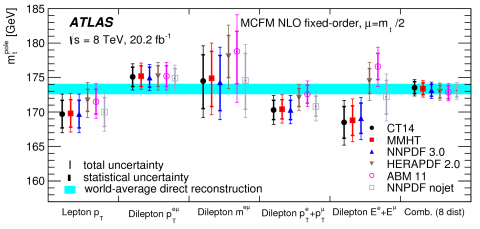
Studying fragments of the top quark
– Using Run 1 data, ATLAS reports a new differential production rate measurement of top quark pairs and a precise new determination of the top quark mass.Read more →
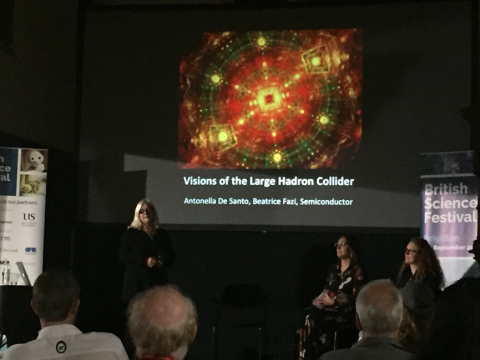
The art of physics
– I have been doing some work with artists recently. Not that I’m planning a career change, you know: I just love to talk about my research to anyone who is prepared to listen, and lately it’s been with artists. Ruth Jarman and Joe Gerhardt, aka Semiconductor, are internationally renowned visual artists who in 2015 won the Collide@CERN Ars Electronica Award and spent a two-month residency at CERN. Like myself, they live in Brighton, which is also home to the University of Sussex, where I work.Read more →
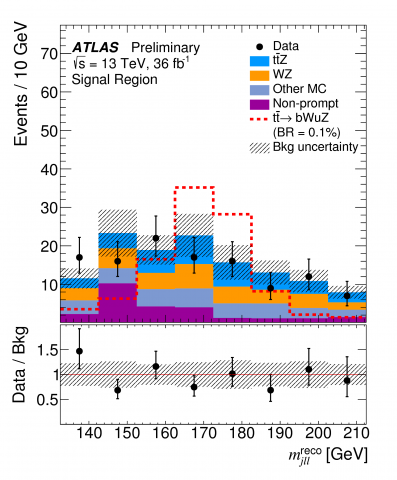
Hunting down forbidden decays of the top quark
– Ordinary matter is made of just three kinds of elementary particles: up and down quarks, which form the atomic nucleus, and electrons, which surround the nucleus. But the rest of nature is not so straightforward: heavier forms of quarks and leptons are produced regularly at particle accelerators.Read more →
ATLAS LIVE: Celebrating 25 years of discovery
– To celebration of its 25th anniversary, ATLAS is hosting a series of Facebook live events today, Monday 2 October 2017. Explore key locations around CERN - including the ATLAS control room, Building 40 and the ATLAS TileCal workshop - while learning about the physics, construction and history of the ATLAS Experiment.Read more →

ATLAS and CMS look forward with the top quark
– The top quark, the heaviest known elementary particle, has a unique place in the Standard Model. By precisely measuring its properties, ATLAS physicists can probe physics beyond our current understanding.Read more →


